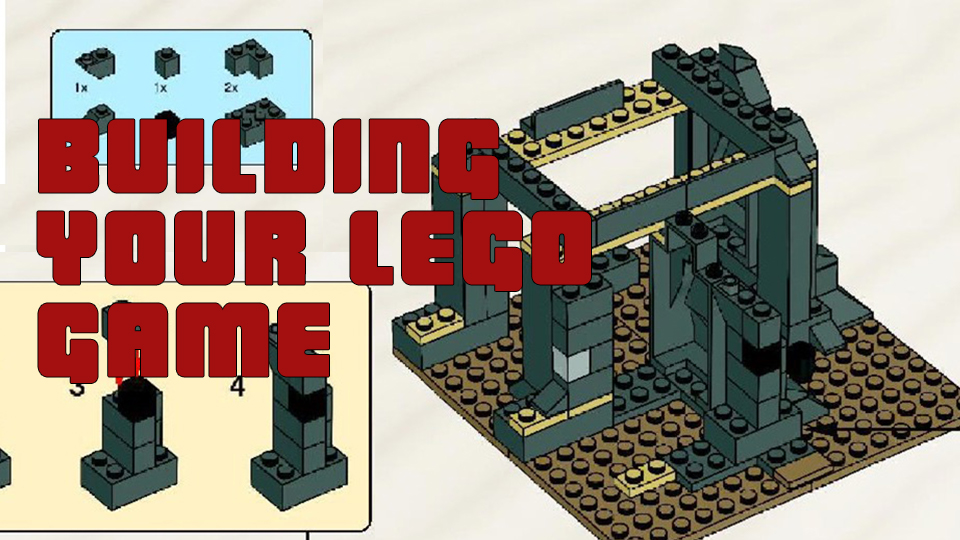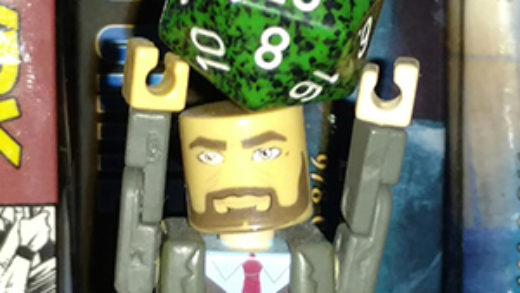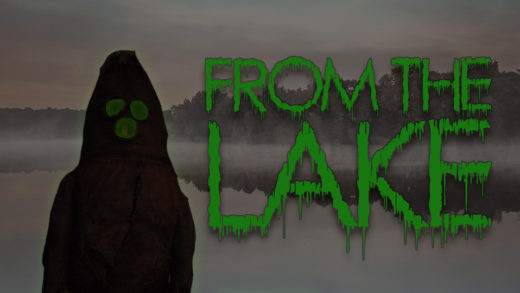Last month I posted an article about integrating LEGO® as miniatures into a tabletop role-playing game. I received a lot of positive feedback and some good suggestions/ideas from readers (especially those in the Facebook “Lego Dungeons & Dragons” group). This week’s column includes additional thoughts and resources for building brick integration.

Making Your Maps
There are groups dedicated to building fully mapped dungeons, scaled to the size of minifigs with walls and articulations. This requires patience, building skills, and a lot of bricks. Putting together a full map of any area may be cost or time prohibitive, but there are some workarounds which still include using Lego as part of the dungeon ambience. Instead of building full walls at 5+ bricks high, consider using 2 stacked bricks to represent walls and other bricks as props. Save the big builds for the major reveals, like statues and throne rooms.
While a uniform color is admirable, this can often use up more bricks than one might have. When building walls, consider using a dual or shaded color palette of blacks and grays, blues and whites, etc. Then, for any markers or props inside the walls, use differently colored bricks. This helps maximize brick availability without being a rainbow of colors that may make identifying what’s what.
Knock-Offs and Non-Bricks
If you want to build to impress but don’t have a library of bricks, use the resources you might have. Crafty types may be able to build walls or scenery from cardboard or foamcore. Use pre-molded gaming terrain or model train terrain and props. Aquarium decor and backdrops are an inexpensive way to add props to the game, too. When adding life to the tabletop scene, improvisation is key.
If trying to stick with more brick, there are also a number of Lego knock-offs that may keep one’s wallet a bit more intact. As a note, though, even some of the major brands may not have the interlocking grip of the official Lego bricks. Lego-compatible brands include K’Nex, Kre-O, Mega Bloks, and Tyco Super Blocks (to name a few). There are also direct Lego clones produced largely in Asia, but the degree of quality can vary significantly–even from the same manufacturer, and the paint/plastic is not always non-toxic. That said, LEPIN seems to be the best-rated of the direct Lego clones, often offering extremely similar sets, sharing the same overall designs as official Lego sets as well as unique but compatible options for a fraction of the price of Lego.
Bionicle
Lego’s Bionicle line may not have much in the way for walls or terrain, but its overall larger scale of pieces can allow for making large and articulated monsters. While the toy line itself is no longer produced, many of the sets and pieces are sold for a more discounted rate than other Lego lines.
Hats, Helmets, Hair, and Accessories
Once the dungeon is mapped out and built, it’s important that players can recognize their characters easily. Often, the view of the minifig body or face will be obscured. I recommend ensuring that every minifig on the map have a unique head adornment in color and/or shape. This helps ensure characters are easy to recognize. Another option would be to give similarly-hatted minifigs an accessory. However, accessories can take up additional space or affect the balance of the minifig, so it’s important to test the accessory and minifig prior to play. Even if using a Lego base, figures may not always be fully seated/locked to the grid, so self-balance is important.
Custom Crafted
There are a number of custom-crafted or designed accessories and sets that can bring uniqueness to a minifig or setting. I mentioned a couple in the last article, but these companies also deserve attention:
- BrickForge crafts unique minifig accessories and armor, as well as hex stands.
- BrickWarriors offers unique accessories, headgear, and fully-painted minifigs.
- Adventure Bricks sells unique animals and monsters, as well as custom painted minifigs (they have a “build your own” option on their site).
- Firestar Toys is UK based and sells official Lego minifigures and parts, as well as custom-designed minifigures.
- Citizen Brick custom prints minifig parts and even offers the ability to order unique parts (at 200+ pieces, so this is better suited for stores than an individual’s game).
- Eclipse Grafx focuses primarily on custom minifigs, but also sells a few unique props (like cereal boxes).
- Little Legends not only offers custom weaponry, but also more peace-time accessories like guitars and formal wear.
Adding to Your Inventory
In addition to the custom pieces listed above and the stores mentioned in the previous article, here are a few other suggestions I’ve received for adding to one’s Lego collection.
- LEGO Shop was an egregious miss on my first column, as this is the official store for Lego sets and individual parts. There are also a number of official Lego stores throughout the world.
- Brick Owl is a marketplace for individual parts, minifigures, and sets. Like BrickLink or Ebay, this is a collection of sellers, so separate orders and shipping may apply if shopping for a number of items.
- ToyPro sells Lego parts and sets, but also sells minifigures outside of their sets, which can be handy when it’s just a body part that’s wanted.
- Etsy has a number of sellers that sell brick collections in bulk, often color or shape-based. Quality or selection of parts may vary, but are often cheaper by the pound.
- There are a number of Lego-specific brick and mortar stores and I always recommend supporting local businesses. Here in Portland, I often visit Bricks & Minifigs as they sell sets, custom builds, and individual parts.
More Resources
These sites were brought to my attention by readers and can help spark ideas or provide key knowledge:
- LEGO Customer Service has their entire library of building instructions available online. One not need own the set, just the bricks.
- BrickQuest is a Lego-based dungeon crawl RPG system; the site also discusses methods on building a modular dungeon.
- Lego BrickQuest Chicago brought the BrickQuest system to my attention and they encourage visitors to watch and learn at various conventions in the Chicagoland area.
- theBrickBlogger reviews sets and offers ideas for custom builds.
- It’s Not Lego us a review site for some of the knock-off and clone Lego sets, and details compatibility, paint quality, and more.


Recent Comments